Merida bikes range: which model is right for you?
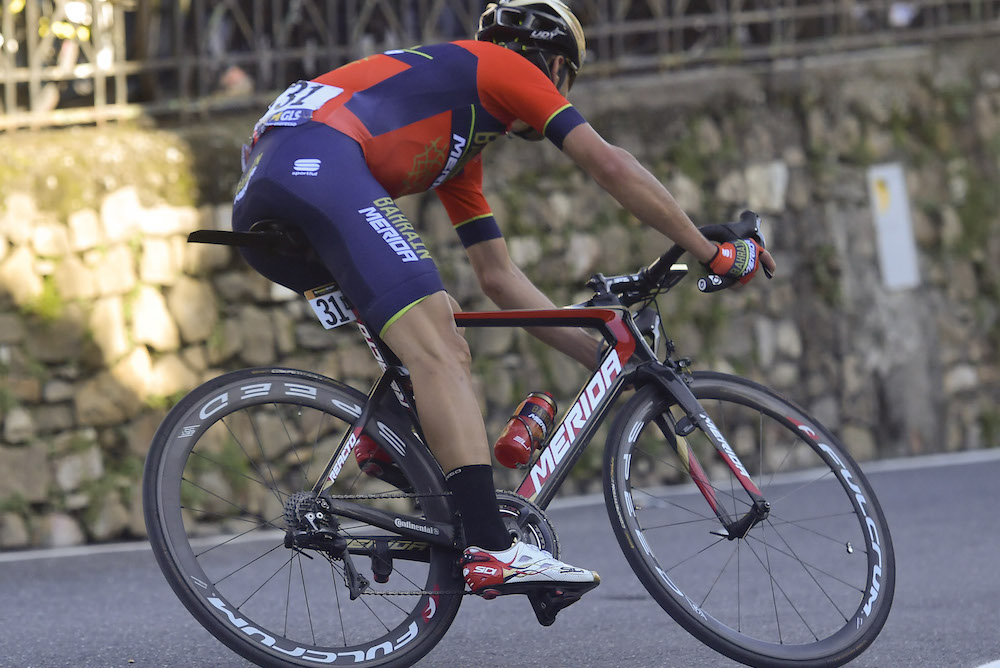
While it might sound like a fable, Merida bikes was in fact created because its founder Tseng, while on a trip to the USA, was disappointed to find a bike shop that wouldn't fix bikes from Taiwan due to alleged "poor quality".
That was back in 1972, and in 2013 the brand celebrated its 25th anniversary and today boasts three different types of road bike as well as a cyclocross and a gravel range.
The brand is also the title sponsor of the WorldTour racing team Bahrain-McLaren which currently employs big name stars such as Mikel Landa.
In the UK, Merida bikes are mostly sold via online retailers or in local stores with the brand mostly avoiding the major high street retailers.
Useful links for road bike shoppers…
| Brands/topics | Model overviews and reviews |
| BMC bikes | BMC bike reviews |
| Boardman | Boardman bike reviews |
| Cannondale | Bike reviews,SuperSix Evo,CAAD12,Synapse |
| Canyon bikes | Canyon bike reviews |
| Carrera bikes | Carerra bike reviews |
| Cervelo bikes | Cervelo bike reviews |
| Cube bikes | Cube bike reviews |
| Focus bikes | Focus bike reviews |
| Genesis bikes | Genesis bike reviews |
| Giant bikes | Giant bike reviews,Giant Defy,Giant Propel,Giant TCR |
| Pinarello | Pinarello bike reviews |
| Raleigh bikes | Raleigh bike reviews |
| Ribble bikes | Ribble bike reviews |
| Scott bikes | Scott bike reviews |
| Specialized | Bike reviews,Allez,Tarmac,Diverge |
| Trek bikes | Bike reviews,Domane,Emonda,Madone |
| Price points | Best road bikes, bikes under £500,under £1000,under £1500,under £2000 |
| Road bike styles | Aero road bikes,Endurance road bikes,Women’s road bikes,Commuting bikes,Touring bikes,Singlespeed bikes,Track bikes,Time trial bikes |
| Other bike styles | Adventure and gravel bikes,Cyclocross bikes,Electric bikes,Hybrid bikes |
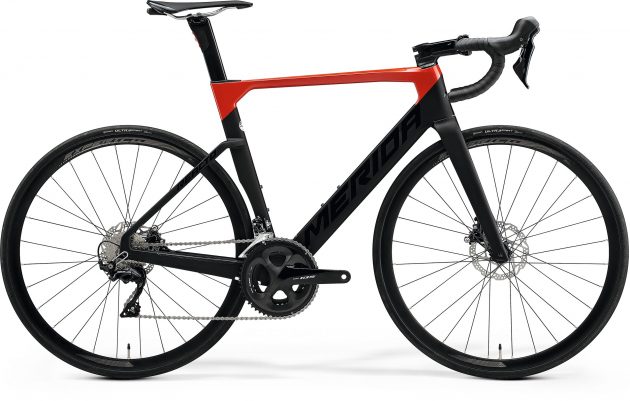
The Reacto is Merida's flagship aero racing bike.
Just from looking at it, it's clear that the Reacto has all the makings of a bonafide aero bike. The higher end models feature a CF5 frame have an integrated Vision Metron cockpit that hides the Di2 junction box. The frame, meanwhile, has the complex shapes that earmark it as a whippet in the wind.
At a lower level, the frames are labelled CF3 which are a little heavier and don’t integrate the cables as cleanly. These frames do go down to a size XXS, as opposed to only XS in the CF5, and so opens the platform up to a wider range of riders.
In total, the brand offers 8 different Reacto models, but rim brake and aluminium builds no longer available. The whole range now rolls on carbon fibre and disc brakes.
The Merida Reactos feature sophisticated carbon layups, including Anti Wrinkle Technology (more on this further down the page). Apart from the CF3 and CF5 frames, the differentiating factors between the models are in the level of the components. As you might expect, those bikes with E following the names are equipped either with electronic groupsets, either Di2 or SRAM eTap.
- News: Will Merida’s new Reacto redefine the way aero bikes are designed?
- Read more: Merida Reacto Team-E review
- See the Merida Reacto range at Tredz here
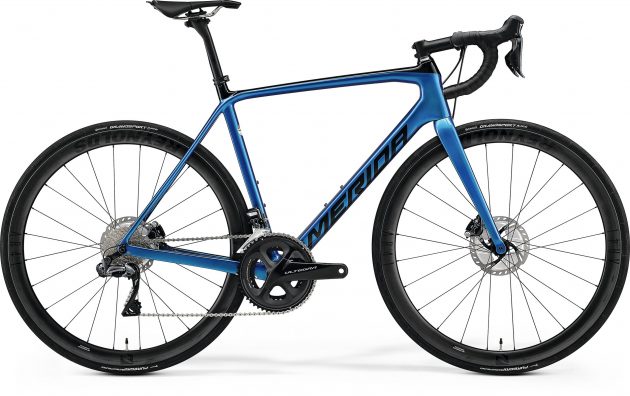
Designed to be a road racing frame, the Scultura is quick and nimble with an agressive geo, and almost all models feature disc brakes.
The 100, 200, 300 and 400 all have a hydro-formed, aluminium triple butted frames paired with a carbon fork. These also share Merida's 'smooth welding' technology and have the capability to accommodate internal cable routing.
The carbon fibre frames kick off with the Scultura 5000, and the CF2 frames - the name that the brand gives to its more relaxed geometry - are also present on the Scutlura 6000 and 7000-E.
Above this point, starting with the 8000-E, the frames get Merida's CF4 geometry which is more aggressive and race ready. All the carbon editions get the 'Flex Stay' technology, which increases the compliance of the rear triangle, smoothing out chattery roads.
Both the CF2 and CF4 carbon fibre frames also come with NACA truncated tube designs, so the higher end bikes get a nice aerodynamic touch.
All - apart from the entry level 100 - come with tubeless ready rims and for the 7000-E, tubeless tape and valves come included. At 8000-E, those metal rims turn to carbon.
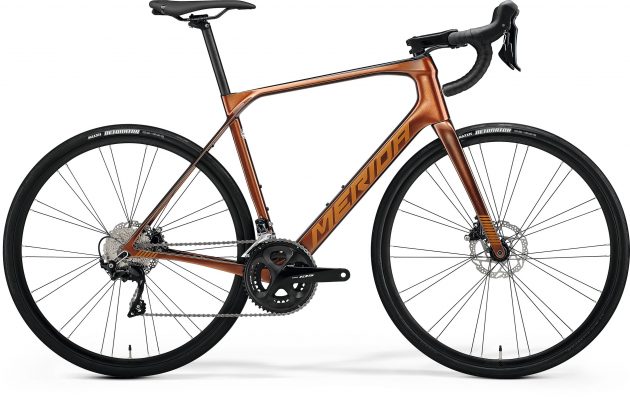
Finding its place in Merida's line up between the Scultura the Silex gravel bike (covered later in this guide) is the Scultura Endurance range.
It features updated geometry, namely a longer head tube for a more relaxed riding position plus an increase in clearances to fit 35mm tyres, suiting the needs of a long-distance, comfort-orientated rider. The Scultura Endurance bikes should be the choice of a leisure-focused cyclist who still devours lots of miles but wants to do so with increased comfort.
Borrowing the recently introduced ‘Wire Port’ headset, normally found on more race oriented machines, this bike is kept tidy by hiding the cable routing from handlebars into the frame.
- News: The Merida Scultura Endurance closes the gap between road and off-road
- See the Merida range at Tredz here
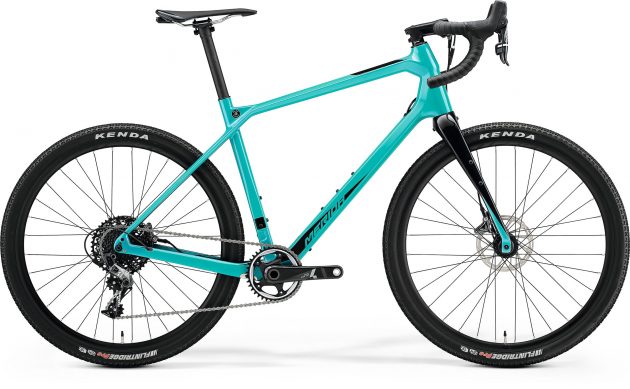
The Silex is the adventure and gravel bike, designed to add a bit of spice to your life and indulge your adventurous whims.
The geometry of the leans far closer to mountain biking than road cycling. Hence the longer head tube, a low stand-over-height and longer reach coupled with a shorter stem. According to Merida, the decision to extend the head tube is to make the need for spacers obsolete and to make descending on the drops safer and more comfortable.
True to mountain biking form, the brand has also adopted 1x drivetrains for simplicity in the top range models, whereas the lower tiers utilise a double chainring setup. 42mm tyres can be accommodated on a 700c rim, whilst with a 650b wheel, 50mm can be slipped into the carbon frames but only 42mm will fit in the alloy frames.
As an adventure bike, the Silex is designed to be loaded with luggage and accessories, and the bike having a unique quick-mount mudguard setup. All of the range use Merida's 'Smart Entry' technology which clamps the cables in place to stop them rattling around.
The Silex range is less expansive than its Scultura sibling, but it still manages to offer both aluminium and carbon models. To be specific, the Silex 200, 400 and 700 have the 'Silex Lite' frame which is a hydro-formed, triple butted aluminium frame with smooth welding partnered with a carbon fork up front.
The Silex+ 6000 and 8000-E come with the Merida's CF2 frames and SRAM or Shimano GRX groupsets.
Merida bikes' technologies
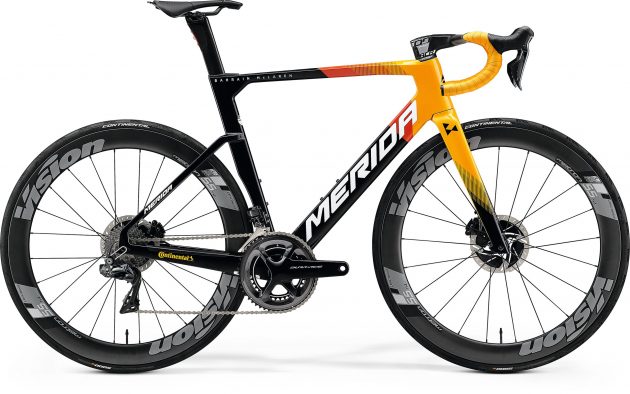
Merida has plenty of bike technology at play across its model range, and we've touched upon a lot of them throughout this piece but we'll expand a little bit on some of the key focuses, especially to do with frame design.
Carbon fibre – Anti-Wrinkle System and Nano particles
Merida uses its Nano Matrix Carbon and carbon Anti-Wrinkle System across nearly all of its carbon fibre bikes, and both of these help increase the stiffness of the frame.
With the former, Merida enriches its epoxy resin with nanoparticles which it says makes the finished product 40 per cent stronger. Meanwhile, the Anti-Wrinkle System does exactly what it says on the tin – it stops the inside of the frame wrinkling, helping increase durability and improve stiffness.
All of the models explained here have an X-Tapered head tube, which is 1.5" at the bottom and a weight saving 11/8 at the top, thus helping to reduce weight whilst maintaining stiffness.
Aluminium – hydro-forming and triple butted
Merida also has an extensive list of aluminium technologies that are worth dipping into at this point as a lot of them are found on the bikes described above.
For starters, pretty much every Aluminium bike found here has been made using hydro-forming, which is a cost effective way of forming metal into complex shapes that retain stiffness, light weight and durability.
Merida also uses triple butted Aluminium on its Prolite 66 frames. Effectively, this is just tapering of the material, with more being used at junctions where reinforcement is needed.
Merida also has Racelite 61 aluminium that, as you might tell, is lighter but also stiffer thanks to additional heat treatment. On its aluminium frames Merida also uses 'smooth welding', which is more aesthetic than anything else but tidies up the junction areas of the tubing nicely.

Thank you for reading 20 articles this month* Join now for unlimited access
Enjoy your first month for just £1 / $1 / €1
*Read 5 free articles per month without a subscription

Join now for unlimited access
Try first month for just £1 / $1 / €1
Get The Leadout Newsletter
The latest race content, interviews, features, reviews and expert buying guides, direct to your inbox!
-
 Aero bikes with gravel wheels?: Six tech insights from Paris-Roubaix Femmes
Aero bikes with gravel wheels?: Six tech insights from Paris-Roubaix FemmesEverything we found out about tyre widths, self-inflating systems, and wheel choices from the cobbled Monument
By Tom Davidson Published
-
 'This race is absolutely disgusting': Peloton reacts to another brutal Paris-Roubaix Femmes
'This race is absolutely disgusting': Peloton reacts to another brutal Paris-Roubaix FemmesNow in its fifth edition, Paris-Roubaix Femmes is still a tough race, even for the best bike riders in the world
By Adam Becket Published